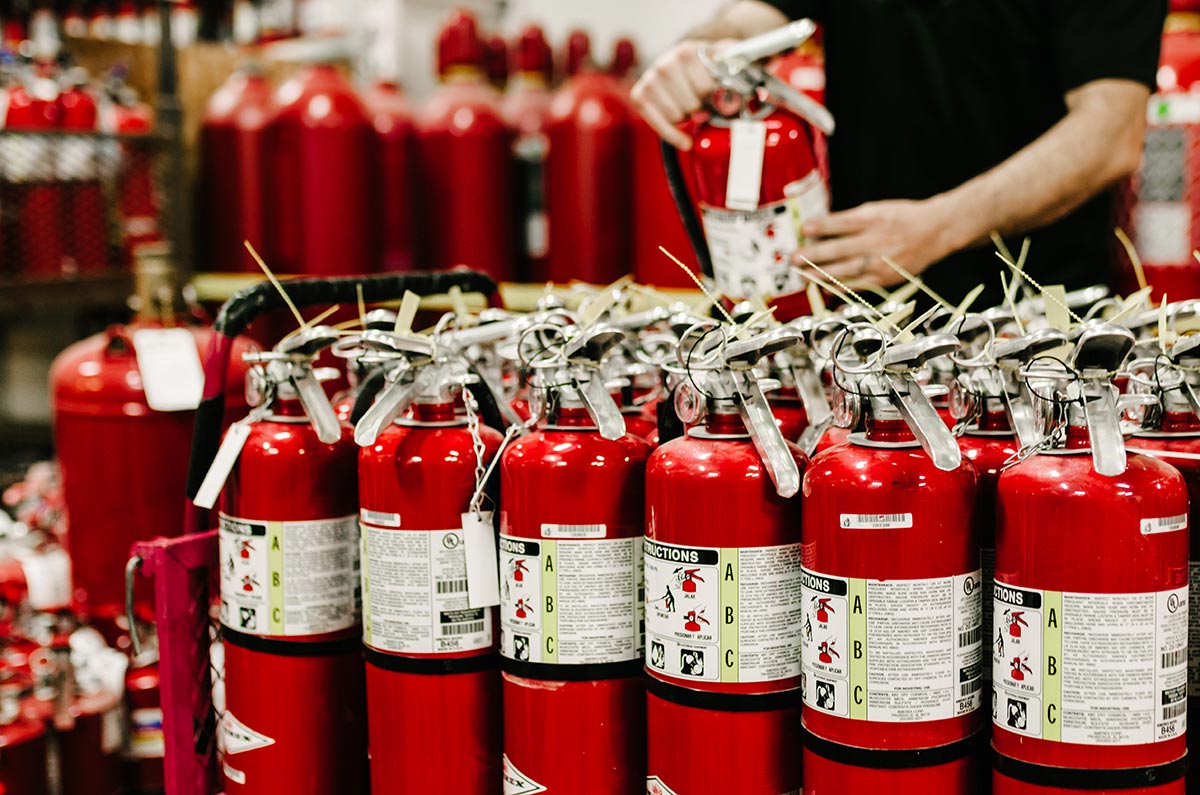Selecting and Making use of Fire Extinguishers For Your Dwelling
Each dwelling really should have at least a single fire extinguisher, situated in the kitchen. Superior nevertheless is to install fire extinguishers on each level of a home and in each and every potentially hazardous location, like (apart from the kitchen) the garage, furnace space, and workshop.
Choose fire extinguishers by their size, class, and rating. “Size” refers to the weight of the fire-fighting chemical, or charge, a fire extinguisher contains, and ordinarily is about half the weight of the fire extinguisher itself. For ordinary residential use, extinguishers two and a half to 5 pounds in size typically are sufficient these weigh 5 to ten pounds.
“Class” refers to the sorts of fires an extinguisher can put out. Class A extinguishers are for use only on ordinary combustible supplies such as wood, paper, and cloth. Normally, their charge consists of carbonated water, which is low-cost and adequate for the job but very hazardous if utilized against grease fires (the pressurized water can spread the burning grease) and electrical fires (the water stream and wetted surfaces can become electrified, delivering a possibly fatal shock). Class B extinguishers are for use on flammable liquids, such as grease, oil, gasoline, and other chemical compounds. Ordinarily their charge consists of powdered sodium bicarbonate (baking soda).
Class C extinguishers are for electrical fires. Most include dry ammonium phosphate. Some Class C extinguishers include halon gas, but these are no longer manufactured for residential use due to the fact of halon’s adverse impact on the earth’s ozone layer. Halon extinguishers are advisable for use around highly-priced electronic gear such as computer systems and televisions the gas blankets the fire, suffocating it, and then evaporates with no leaving chemical residue that can ruin the equipment. A different advantage of halon is that it expands into difficult-to-reach regions and around obstructions, quenching fire in areas other extinguishers can’t touch.
A lot of fire extinguishers contain chemical compounds for putting out combination fires in truth, extinguishers classed B:C and even ARC are additional broadly readily available for residence use than extinguishers created only for individual kinds of fires. ABS أبواب -goal ARC extinguishers generally are the best selection for any household place however, B:C extinguishers place out grease fires far more efficiently (their charge of sodium bicarbonate reacts with fats and cooking oil to form a wet foam that smothers the fire) and so should really be the first selection in a kitchen.
“Rating” is a measurement of a fire extinguisher’s effectiveness on a offered kind of fire. The greater the rating, the a lot more powerful the extinguisher is against the class of fire to which the rating is assigned. Basically, the rating system is a bit far more complicated: rating numbers assigned to a Class A extinguisher indicate the approximate gallons of water required to match the extinguisher’s capacity (for instance, a 1A rating indicates that the extinguisher functions as effectively as about a gallon of water), although numbers assigned to Class B extinguishers indicate the approximate square footage of fire that can be extinguished by an average nonprofessional user. Class C extinguishers carry no ratings.
For protection on an complete floor of a house, acquire a reasonably huge extinguisher for example, a model rated 3A:40B:C. These weigh about ten pounds and cost about $50. In a kitchen, decide on a 5B:C unit these weigh about three pounds and expense around $15. For enhanced kitchen protection, it is almost certainly greater to buy two modest extinguishers than a single bigger model. Kitchen fires commonly commence compact and are very easily handled by a compact extinguisher smaller extinguishers are a lot more manageable than bigger ones, specially in confined spaces and, due to the fact even a partly made use of extinguisher need to be recharged to prepare it for further use or replaced, possessing a number of tiny extinguishers makes better economic sense.
A 5B:C extinguisher is also a fantastic choice for guarding a garage, exactly where grease and oil fires are most probably. For workshops, utility rooms, and related places, acquire IA: lOB:C extinguishers. These, too, weigh about 3 pounds (some weigh up to five pounds) and price about $15. In all situations, get only extinguishers listed by Underwriters Laboratories.
Mount fire extinguishers in plain sight on walls close to doorways or other prospective escape routes. Use mounting brackets produced for the goal these attach with extended screws to wall studs and enable extinguishers to be immediately removed. Rather of the plastic brackets that come with many fire extinguishers, contemplate the sturdier marine brackets authorized by the U.S. Coast Guard. The correct mounting height for extinguishers is amongst 4 and 5 feet above the floor, but mount them as high as six feet if essential to hold them out of the attain of young youngsters. Do not retain fire extinguishers in closets or elsewhere out of sight in an emergency they are probably to be overlooked.
Invest in fire extinguishers that have pressure gauges that allow you to verify the condition of the charge at a glance. Inspect the gauge when a month have an extinguisher recharged where you purchased it or by way of your local fire division whenever the gauge indicates it has lost stress or right after it has been applied, even if only for a handful of seconds. Fire extinguishers that can’t be recharged or have outlasted their rated life span, which is printed on the label, must be replaced. In no case should you retain a fire extinguisher longer than ten years, regardless of the manufacturer’s claims. Sadly, recharging a smaller extinguisher frequently fees nearly as considerably as replacing it and could not restore the extinguisher to its original condition. Wasteful as it seems, it is ordinarily better to replace most residential fire extinguishers rather than have them recharged. To do this, discharge the extinguisher (the contents are nontoxic) into a paper or plastic bag, and then discard each the bag and the extinguisher in the trash. Aluminum extinguisher cylinders can be recycled.
